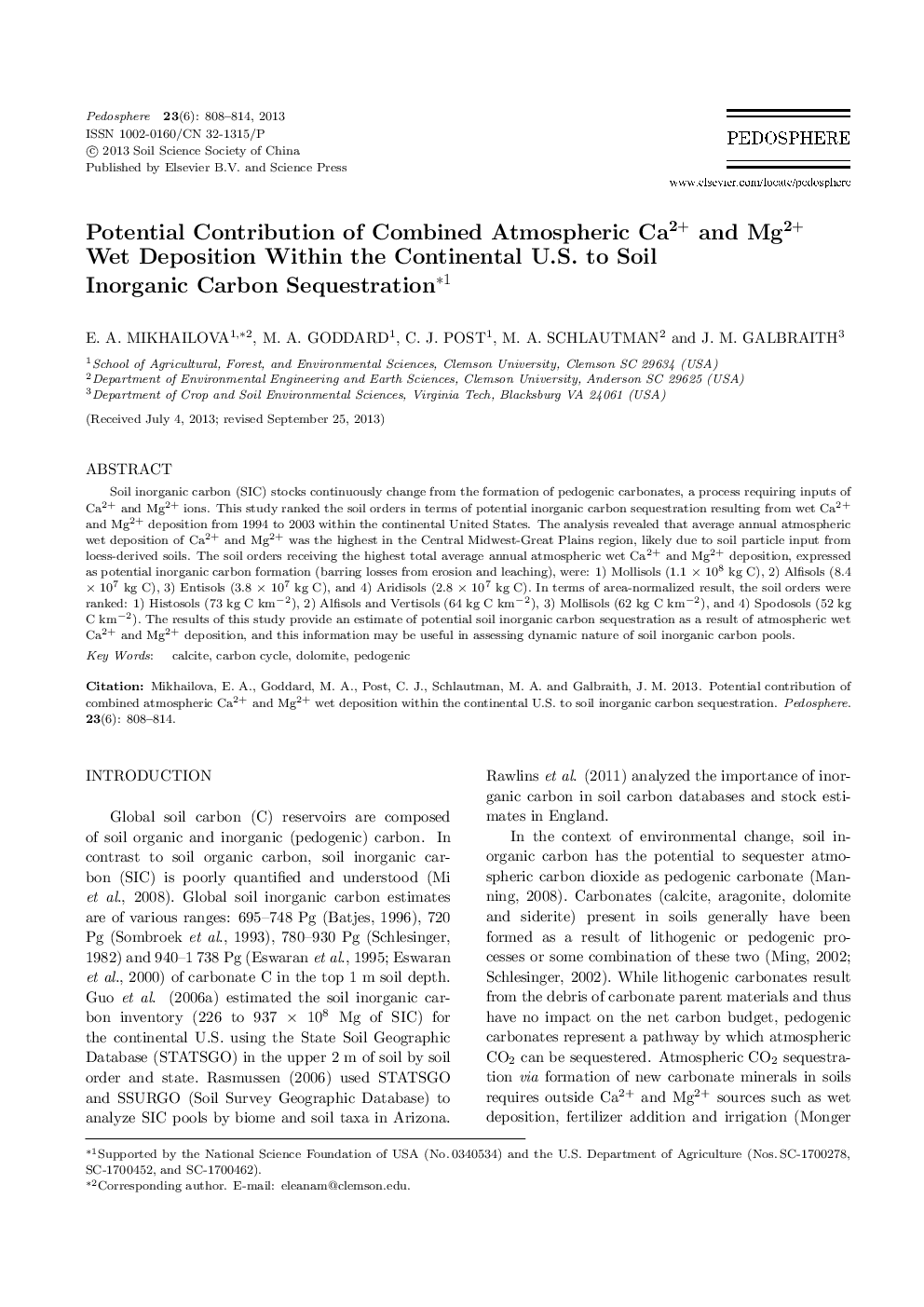| Article ID | Journal | Published Year | Pages | File Type |
|---|---|---|---|---|
| 4581371 | Pedosphere | 2013 | 7 Pages |
Soil inorganic carbon (SIC) stocks continuously change from the formation of pedogenic carbonates, a process requiring inputs of Ca2+ and Mg2+ ions. This study ranked the soil orders in terms of potential inorganic carbon sequestration resulting from wet Ca2+ and Mg2+ deposition from 1994 to 2003 within the continental United States. The analysis revealed that average annual atmospheric wet deposition of Ca2+ and Mg2+ was the highest in the Central Midwest-Great Plains region, likely due to soil particle input from loess-derived soils. The soil orders receiving the highest total average annual atmospheric wet Ca2+ and Mg2+ deposition, expressed as potential inorganic carbon formation (barring losses from erosion and leaching), were: 1) Mollisols (1.1 × 108 kg C), 2) Alfisols (8.4 × 107 kg C), 3) Entisols (3.8 × 107 kg C), and 4) Aridisols (2.8 × 107 kg C). In terms of area-normalized result, the soil orders were ranked: 1) Histosols (73 kg C km−2), 2) Alfisols and Vertisols (64 kg C km−2), 3) Mollisols (62 kg C km−2), and 4) Spodosols (52 kg C km−2). The results of this study provide an estimate of potential soil inorganic carbon sequestration as a result of atmospheric wet Ca2+ and Mg2+ deposition, and this information may be useful in assessing dynamic nature of soil inorganic carbon pools.
